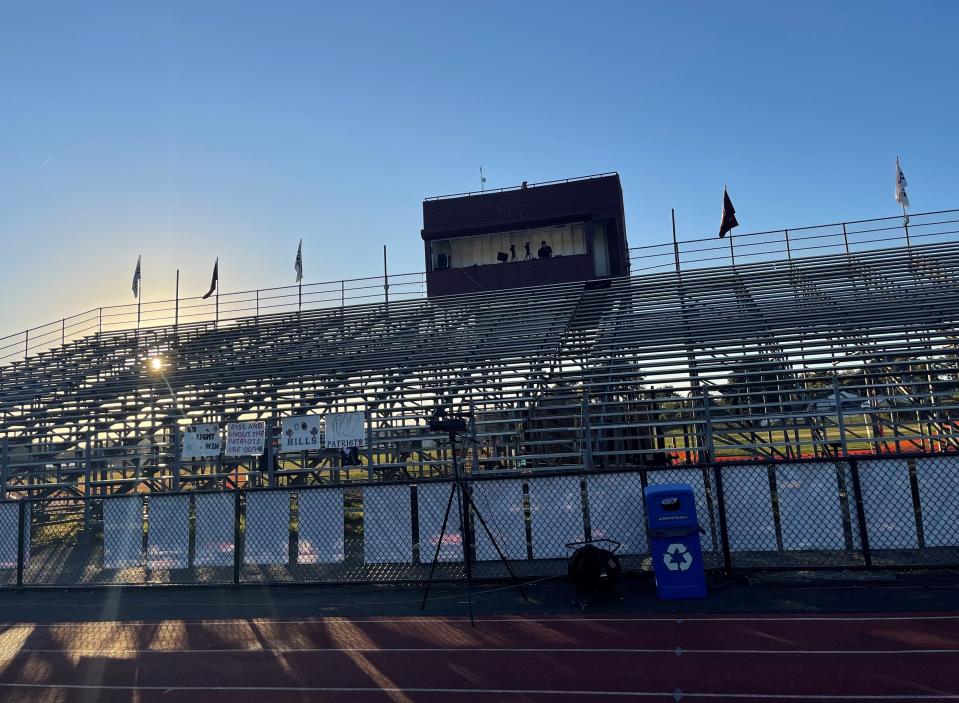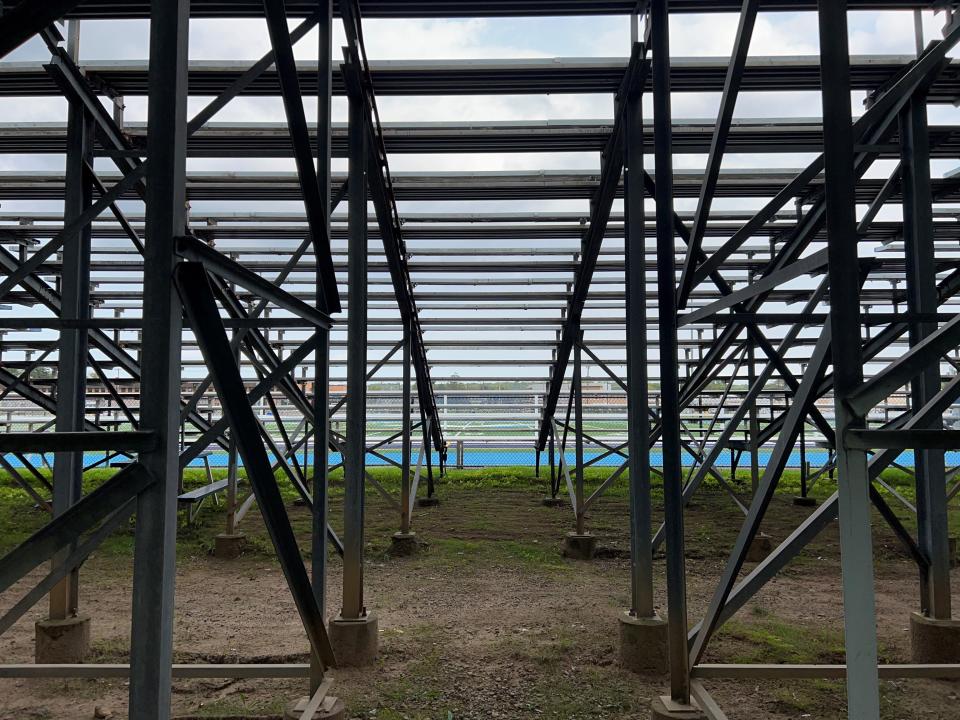Are bleachers safe at this NJ school? Couple on crusade after boy's 'terrifying' fall
WAYNE — A couple from Morris County whose 3-year-old son fell through the bleachers at a high school football game are pressing for a state law that would require all districts to improve or replace antiquated seating.
Ashley and Stacey Brooks of Lincoln Park are launching their advocacy in Wayne due to a “terrifying” ordeal that they said they went through in October.
Their son, Evan, now 4, slipped through a gap in the 60-year-old bleachers at Wayne Valley High School before plummeting about 15 feet to the ground, the couple said.
Miraculously, the couple said, their son escaped serious injuries. But the accident left their family shaken.
“Someone else is going to fall,” said Stacey Brooks, whose daughter is a high school cheerleader. “Someone else isn’t going to be as lucky as we were.”
TOWNSHIP COUNCIL: Wayne property owners would have less time to clean up graffiti under new ordinance
The Brooks family went public with the issue in June, urging the Board of Education to implement temporary safety measures for the grandstands at Wayne Valley and at its crosstown rival, Wayne Hills High School, until a permanent solution is found.
They were supported by multiple people who agreed that the bleachers are unsafe.
Sherry Tremper of Verona told trustees that she experienced a similar incident at a competition for marching bands at Wayne Valley just two weeks after Evan fell.
Her 3-year-old son also dropped through an opening in the bleachers. “He wasn’t doing anything wrong,” she said. “He shifted his weight and went right through. On instinct, I went right down after him.”
Karen Mahida, whose father, the late Kenneth Sinofsky, was a legendary football coach at Wayne Valley, said she has been traumatized since witnessing Evan’s accident.

She was sitting beside him, she said.
“I can’t even tell you how fast it happened,” Mahida said, wiping away tears as she recounted the story. “We were next to him, and in less than a second, that little boy fell.”
At the following meeting, trustee Catherine Kazan recommended on behalf of its facilities and transportation committee that signs be posted at the grandstands at the high schools to advise spectators where children should sit. Public safety announcements will also be made at events held at the football fields, she said.
“There are other ways to approach this issue,” Kazan said, “and we feel that education is the way.”
Cost was a major factor in that decision, Kazan said.
The approximate price to retrofit the bleachers at the high schools, not including the smaller seating sections for visitors, is $750,000, Kazan said. The school board is beginning to plan for a referendum that would include their total replacement.
“There’s no $750,000 sitting in a desk drawer somewhere,” Kazan said. “We’d literally have to cancel major programs and maybe, reduce staff. We wouldn’t be doing our jobs as stewards of taxpayers’ money if we spent it and then, ripped it out and threw it in the garbage next year.”
Brooks said the school board’s response to put up signs was “incredibly disappointing.”
“We’re not asking for anything,” Brooks said. “We’re not trying to gain anything, but safety — we’re doing this to help other people.”
The New Jersey Bleacher Safety Act, a proposed bill co-sponsored by state Sen. Anthony Bucco, R-Denville, and state Sen. Kristin Corrado, R-Totowa, would require the state commissioner of community affairs to adopt safety standards for existing bleachers that would involve their replacement or retrofitting.

The current standards apply only to new installations.
The toughest bleacher safety law in the nation is in Minnesota, where a 6-year-old boy died after falling through a 13-inch gap in the stands at an ice hockey game in the city of Hutchinson, about 80 miles west of the state capital.
That incident, in January 1999, compelled the state Legislature in St. Paul to enact a first-of-its-kind law. Among other regulations, it states that openings between the footboards and seats of bleachers cannot exceed 4 inches.
But such a strict design standard seems to be the exception, rather than the rule.
“It’s a recipe for disaster, and it doesn’t have to be,” Brooks said. “We’re not just attacking Wayne. Everyone should be safe — no one should have to go through this.”
Philip DeVencentis is a local reporter for NorthJersey.com. For unlimited access to the most important news from your local community, please subscribe or activate your digital account today.
Email: devencentis@northjersey.com
This article originally appeared on NorthJersey.com: Wayne NJ high schools bleacher safety under scrutiny

